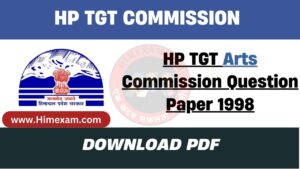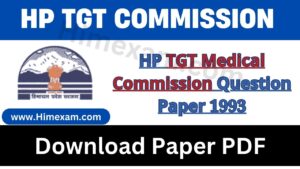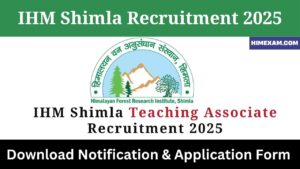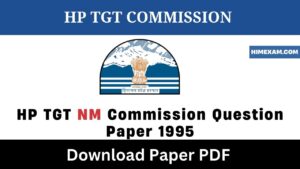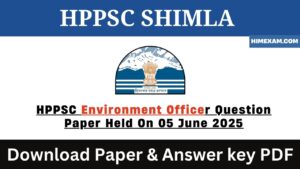Gupta and Post-Gupta Period MCQ Question Answer
||Gupta and Post-Gupta Period MCQ Question Answer||Gupta and Post-Gupta Period MCQ Question Answer in English||
1. Who is known as the Napoleon of India?
(A) Chandragupta Maurya
(B) Chandragupta-II Vikramaditya
(C) Great Ashoka
(D) Samudragupta
2. Who among the following Gupta Kings had another name Devagupta?
(A) Samudragupta
(B) Chandragupta-II
(C) Kumargupta
(D) None of the above
3. Gupta dynasty ruled during
(A) 319-500 A.D.
(B) 319-324 A.D.
(C) 325-375 A.D.
(D) 566-597 A.D.
4. Who of the following rulers had performed four Ashwamedhas?
(A) Pushyamitra Shunga
(B) Pravarasena-I
(C) Samudragupta
(D) Chandragupta-II
5. The first Gupta ruler to assume the title of ‘Param Bhagavata’ was
(A) Chandragupta-I
(B) Samudragupta
(C) Chandragupta-II
(D) Srigupta
6. The Allahabad Pillar inscription is associated with which one of the following?
(A) Mahapadma Nanda
(B) Chandragupta Maurya
(C) Ashoka
(D) Samudragupta
7. The Ashoka Pillar at Allahabad provides information about the reign of
(A) Chandragupta Maurya
(B) Chandragupta-I
(C) Chandragupta-II
(D) Samudragupta
8. Prayag Prashashti tells about the military campaign of
(A) Chandragupta-I
(B) Samudragupta
(C) Chandragupta-II
(D) Kumaragupta
9. An inscription by which of the following is found on the pillar containing Prayag Prasasti of Samudragupta?
(A) Jahangir
(B) Shahjahan
(C) Aurangzeb
(D) Dara Shikoh
10. ‘Prithivyah Pratham Veer’ was the title of
(A) Samudragupta
(B) Rajendra-I
(C) Amoghavarsha
(D) Gautamiputra Shatkarni
11. The iron column, located in the courtyard of Delhi’s Quwwat-ulIslam Mosque is a retention of
(A) Ashok
(B) Chandra
(C) Harsha
(D) Anangpal
12. Which dynasty was distracted the most by the Hunas invasion?
(A) Maurya
(B) Kushan
(C) Gupta
(D) Shunga
13. The Hunas invaded India during the reign of
(A) Chandragupta-II
(B) Kumaragupta-I
(C) Skandagupta
(D) Budhagupta
14. Who among the following Gupta Rulers conquered Hunas?
(A) Chandragupta-II
(B) Kumaragupta-I
(C) Skandagupta
(D) Bhanugupta
15. From which inscription it is known that Skandagupta defeated Hunas?
(A) Bhitari Pillar Inscription
(B) Allahabad Pillar Inscription
(C) Mandsaur Inscription
(D) Udayagiri Inscription
16. There were different causes for the downfall of the Gupta Empire. Which one among the statements given below was not the cause?
(A) Huna invasion
(B) Feudal set-up of https://himexam.com/wp-content/uploads/2021/12/Madhya-Pradesh-MP-PEB-Group-2-Sub-Group-4-Various-Post-Answer-Key-2021.jpgistration
(C) Acceptance of Buddhism by the later Guptas
(D) Arab invasion
17. Who is known as ‘Sakaconqueror’?
(A) Chandragupta-I
(B) Samudragupta
(C) Chandragupta-II
(D) Kumargupta
18. Who was the first Gupta ruler to issue silver coins?
(A) Chandragupta-I
(B) Samudragupta
(C) Chandragupta-II
(D) Kumargupta
19. From the third century A.D. when the Huna invasion ended the Roman Empire, the Indian merchants relied more and more on the
(A) African trade
(B) Western-European trade
(C) South-East Asian trade
(D) Middle-Eastern trade
20. Which one of the following ports handled the North Indian trade during the Gupta period?
(A) Tamralipti
(B) Bhadoch
(C) Kalyan
(D) Cambay
21. India maintained its early cultural contacts and trade links with South-East Asia across the Bay of Bengal. For this pre-eminence of the early maritime history of Bay of Bengal, which of the following could be the most convincing explanation/explanations?
(A) As compared to other countries, India had a better shipbuilding technology in ancient and medieval times
(B) The rulers of Southern India always patronised traders, brahmin priests and Buddhist monks in this context
(C) Monsoon winds across the Bay of Bengal facilitated sea voyages
(D) Both (A) and (B) are convincing explanation in this context
22. Centres located in Gujarat, Bengal, Deccan and Tamil Country during the Gupta period were associated with which of the following?
(A) Textile manufacture
(B) Gems and precious stones
(C) Handicrafts
(D) Opium cultivation
23. Which one of the following ports handled the North Indian trade during the Gupta Period?
(A) Bhadoch
(B) Kalyan
(C) Cambay
(D) Tamralipti
24. Who among the following is known for his Ayurvedic thematic composition during Gupta period?
(A) Saumilla
(B) Shudraka
(C) Shunaka
(D) Sushruta
25. Who among the following is not associated with medicine in ancient India?
(A) Dhanvantri
(B) Bhaskaracharya
(C) Charaka
(D) Susruta
26. Who of the following among the Nine Gems of Chandragupta was associated with Astrology?
(A) Vararuchi
(B) Sanku
(C) Kshapanak
(D) Amar Singh
27. Kalidas was in the ruling period of
(A) Samudragupta
(B) Ashoka
(C) Chandragupta-I
(D) Chandragupta-II
28. Which (among these) are Gupta’s gold coins?
(A) Kaudi
(B) Dinara
(C) Nishka
(D) Pan
29. The silver coins issued by the Guptas were called
(A) Karshapana
(B) Dinara
(C) Rupaka
(D) Nisc
30. Who of the following was the first Gupta ruler to issue coins?
(A) Chandragupta-I
(B) Ghatotkacha
(C) Samudragupta
(D) Srigupta
31. In Sanskrit plays written during the Gupta period women and Sudras speak
(A) Sanskrit
(B) Prakrit
(C) Pali
(D) Sauraseni
32. The first inscriptional evidence of the Satipratha has been found from
(A) Eran
(B) Junagarh
(C) Mandsaur
(D) Sanchi
33. Who established Gupta Samvat?
(A) Chandragupta-I
(B) Srigupta
(C) Chandragupta-II
(D) Ghatotkacha
34. The gradual decline of towns was an important feature of which period?
(A) Gupta period
(B) Pratihara era
(C) Rashtrakut
(D) Satavahana era
35. Which ruling dynasty donated maximum villages to temples and Brahmins?
(A) Gupta Dynasty
(B) Pala Dynasty
(C) Rashtrakut
(D) Pratihara
36. In ancient India, which dynasty’s rule is considered as the Golden Age?
(A) Mauryan
(B) Shunga
(C) Gupta
(D) Magadha
37. During which age did women enjoy equality with men?
(A) Gupta age
(B) Mauryan age
(C) Cholas
(D) Vedic age
||Gupta and Post-Gupta Period MCQ Question Answer||Gupta and Post-Gupta Period MCQ Question Answer in English||
38. What was the land revenue rate in Gupta age?
(A) Fourth part of the production
(B) Sixth part of the production
(C) Eighth part of the production
(D) Half part of the production
39. What is the land revenue rate in religious books?
(A) 1/3
(B) 1/4
(C) 1/6
(D) 1/8
40. What is the valid tax according to Hindu law?
(A) Half of the yields
(B) One-sixth of the yields
(C) One-third of the yields
(D) One-fourth of the yields
41. The Gupta Empire granted taxfree agrarian land to which of the following?
(A) Military officials
(B) Civil officials
(C) Brahmins
(D) Courts scholars
42. Which type of land was called ‘Aprahat’?
(A) Without cultivated forest land
(B) Irrigated land
(C) Dense forest land
(D) Cultivated land
43. In ancient India, the irrigation tax was called
(A) Bidakabhagam
(B) Hiranya
(C) Udranga
(D) Uparnika
44. In 3rd A.D., Warangal was famous for
(A) Copper pots
(B) Gold Jewelleries
(C) Iron implements
(D) Elephant-teeth work
45. Tormad was from the racial group of
(A) Sithian
(B) Huna
(C) Yaochi
(D) Saka
46. Who amongst the following had defeated Huna ruler Mihirakula?
(A) Budhagupta
(B) Yashodharman
(C) Shashanka
(D) Prabhakaravardhana
47. Chinese traveller ‘Sungyun’ was came in India in
(A) 515 A.D. to 520 A.D.
(B) 525 A.D. to 529 A.D.
(C) 545 A.D. to 552 A.D.
(D) 592 A.D. to 597 A.D.
48. The ancient Indian play Mudrarakshasa of Visakhadutt has its subject on
(A) A conflict between Gods and Demons of ancient Hindu lore
(B) A romantic story of an Aryan prince and a tribal woman
(C) The story of the power struggle between two Aryan tribes
(D) The court intrigues at the time of Chandragupta Maurya
49. Read the following statements carefully
1. Gupta Emperors claimed divine rights for themselves
2. Their https://himexam.com/wp-content/uploads/2021/12/Madhya-Pradesh-MP-PEB-Group-2-Sub-Group-4-Various-Post-Answer-Key-2021.jpgistration was highly centralised
3. They extended the tradition of land grants Answer on the basis of following code.
(A) 1, 2 and 3 are true
(B) 1 and 2 are true
(C) 1 and 3 are true
(D) 2 and 3 are true
50. The game of ‘Chess’ is said to have originated in
(A) China
(B) Iran
(C) Indonesia
(D) India
51. ‘Mrichchhakatika’ an ancient Indian book written by Shudraka deals with
(A) The love affair of a rich merchant with the daughter of a courtesan
(B) The victory of Chandragupta II over the Shaka Kshatrapas of Western India
(C) The military expeditions and exploits of Samudragupta
(D) The love affairs between a Gupta King and a Princess of Kamarupa
52. Whose contribution is there in ancient Sankhya Darshan?
(A) Kapila
(B) Gautam
(C) Nagarjuna
(D) Charvak
53. The system of philosophy propounded by Kapila Muni is
(A) Purva Mimansa
(B) Sankhya Philosophy
(C) Nyaya Philosophy
(D) Uttar Mimansa
54. ‘Sankhya’ Philosophy is propounded by
(A) Gautam
(B) Jaimini
(C) Kapila
(D) Patanjali
55. With reference to the history of philosophical thought in India, consider the following statements regarding Samkhya School.
1. Samkhya does not accept the theory of rebirth or transmigration of the soul.
2. Samkhya holds that it is the self-knowledge that leads to liberation and not any exterior influence or agent. Which of the statements given above is/are correct?
(A) Only 1
(B) Only 2
(C) Both 1 and 2
(D) Neither 1 nor 2
56. Who propagated ‘Yoga Darshan’?
(A) Patanjali
(B) Gautam
(C) Jaimini
(D) Shankaracharya
57. The inventor of Yoga was
(A) Aryabhatta
(B) Charaka
(C) Patanjali
(D) Ramdeva
58. Which one of the following is not part of ‘Ashtangayoga’?
(A) Anusmriti
(B) Pratyahara
(C) Dhyana
(D) Dharana
59. The writer of Mahabhashya ‘Patanjali’ was contemporary of
(A) Chandragupta Maurya
(B) Ashoka
(C) Pushyamitra Shunga
(D) Chandragupta I
60. The founder of school of NavyaNyaya was
(A) Raghunath Shiromani
(B) Gangesh
(C) Sridhara
(D) Udayana
||Gupta and Post-Gupta Period MCQ Question Answer||Gupta and Post-Gupta Period MCQ Question Answer in English||
61. ‘Live well, as long as you live. Live well even by borrowing, for once cremated, there is no return.’ This rejection of afterlife is an aphorism of the
(A) Kapalika Sects
(B) Sunyavada of Nagarjuna
(C) Ajivikas
(D) Charvakas
62. The Nyaya Philosophical system was propagated by
(A) Charvaka
(B) Gautama
(C) Kapila
(D) Jaimini
63. Author of ‘Nyaya Darshan’ was
(A) Gautama
(B) Kapila
(C) Kanad
(D) Jaimini
64. The founder of Nyaya Philosophy was
(A) Kapil
(B) Kanad
(C) Gautam
(D) Jaimini
65. Mimansa was initiated by
(A) Kanad
(B) Vasistha
(C) Vishwamitra
(D) Jaimini
66. The theory of Karma is related with
(A) Nyaya
(B) Mimansa
(C) Vedanta
(D) Vaisheshika
67. Which of the following schools of philosophy is of the opinion that Vedas contain the eternal truth?
(A) Sakhya
(B) Vaisheshika
(C) Mimansa
(D) Nyaya
68. Which one of the following pairs does not form part of the six systems of Indian Philosophy?
(A) Mimansa and Vedanta
(B) Nyaya and Vaisheshika
(C) Lokayata and Kapalika
(D) Sankhya and Yoga
69. The Founder of Advait Philosophy is
(A) Sankaracharya
(B) Ramanujacharya
(C) Madhvacharya
(D) Mahatma Buddha
70. By which of the following according to Advaita Vedanta, Mukti can be obtained?
(A) Gyana
(B) Karma
(C) Bhakti
(D) Yoga
71. Who among the following is not related to the Philosophy of Vedanta?
(A) Shankaracharya
(B) Abhinav Gupta
(C) Ramanuja
(D) Madhava
72. Who among the following is called founder of Indian Atomism?
(A) Maharshi Kapil
(B) Maharshi Gautam
(C) Maharshi Kanad
(D) Maharshi Patanjali
73. The Badami rock inscription of Pulakesin I is dated in the Saka year 465. If the same were to be dated in Vikrama Samvat, the year would be
(A) 601
(B) 300
(C) 330
(D) 407
74. A Chalukya inscription is dated in the year 556 of the Saka era. It is equivalent to
(A) 478 A.D.
(B) 499 A.D.
(C) 613 A.D.
(D) 634 A.D.
75. According to Puranas, the prime place of Chandravansh’s ruler was
(A) Kashi
(B) Ayodhya
(C) Pratishthanpur
(D) Shravasti
76. The capital of Maukharri was
(A) Thaneshwar
(B) Kannauj
(C) Purushpur
(D) None of these
77. Information regarding time of Harsha is contained in the books of
(A) Harisena
(B) Kalhan
(C) Kalidasa
(D) None of these
78. Who has written the ‘Harshacharita’?
(A) Aryabhatta
(B) Banabhatta
(C) Vishnugupta
(D) Parimalgupta
79. The capital of Harsha’s empire was
(A) Kannauj
(B) Pataliputra
(C) Prayag
(D) Thaneshwar
80. Emperor Harsha had shifted his capital from Thaneshwar to
(A) Prayag
(B) Delhi
(C) Kannauj
(D) Rajgriha
81. Harshavardhan organised two great religious conventions in
(A) Kannauj and Prayag
(B) Prayag and Thaneshwar
(C) Thaneshwar and Vallabhi
(D) Vallabhi and Prayag
82. The place in U.P. where Harsh Vardhana organised the Buddha mega convention
(A) Kashi
(B) Prayag
(C) Ayodhya
(D) Sarnath
83. Emperor Harsha’s Southward march was stopped on the Narmada river by
(A) Pulakeshin-I
(B) Pulakeshin-II
(C) Vikramaditya-I
(D) Vikramaditya-II
84. Among the following rulers who had defeated Harshavardhana?
(A) Kirtivarman II
(B) Vikramaditya II
(C) Pulakeshin-I
(D) Pulakeshin-II
85. The Chalukyan ruler Pulakeshin’s victory over Harsha was in the year
(A) 612 A.D.
(B) 618 A.D.
(C) 622 A.D.
(D) 634 A.D.
86. Poet Bana was inhabitant of
(A) Pataliputra
(B) Thaneshwar
(C) Bhojpur
(D) None of these
87. In whose reign-period the Chinese Traveller Hiuen-Tsang visited India?
(A) Chandragupta-II
(B) Harsh
(C) Chandragupta Maurya
(D) Chandragupta-I
88. Which Chinese traveller visited India during Harshavardhana’s rules?
(A) Fa-Hien
(B) Hiuen-Tsang
(C) I-Tsing
(D) Taranath
89. Hiuen-Tsang was contemporary of
(A) Taai-Sunga
(B) Tung-Kuaan
(C) Ku-Yen-Vu
(D) None of these
90. During Hiuen Tsang tour in India most famous city for the production of cotton clothes was
(A) Varanasi
(B) Mathura
(C) Pataliputra
(D) Kanchi
91. The term ‘Kausheya’ has been used for
(A) Cotton
(B) Flax
(C) Silk
(D) Wool
92. Chinese traveller Hiuen-Tsang studied at the University of
(A) Taxila
(B) Vikramshila
(C) Magadh
(D) Nalanda
93. The major reason behind remembering Hiuen-Tsang is
(A) Respect for Harsha
(B) Study in Nalanda
(C) Trust in Buddhas
(D) Composition of Sei-Yu-Kei
94. The Chinese traveller who visited Bhinmal was
(A) Fahien
(B) Sangyun
(C) Hieun-Tsang
(D) I-Tsing
95. The famous Travelogue ‘Si-Yu-Ki’ is linked with
(A) Fahien
(B) Al Biruni
(C) Megasthenes
(D) Hiuen-Tsang
96. Chinese traveller I-Tsing was on the tour of Bihar in about
(A) 405 A.D.
(B) 635 A.D.
(C) 637 A.D.
(D) 672 A.D.
97. Chinese writers mention India by the name of
(A) Fo-Kwo-Ki
(B) Yin-Tu
(C) Si-Yu-Ki
(D) Sikia-Pono
98. Nalanda University was destroyed by
(A) Muslims
(B) Kushans
(C) Sythians
(D) Mughals
99. Nalanda Vihar was destroyed by
(A) Bakhtiyar Khalji
(B) Qutubddin Aibak
(C) Muhammad Bin Tuglaq
(D) Alauddin Khalji
100. The most ancient monastery in India is
(A) Nalanda
(B) Udantpuri
(C) Vikramshila
(D) Bhaja
101. Nalanda is located in
(A) Madhya Pradesh
(B) Andhra Pradesh
(C) Uttar Pradesh
(D) Bihar
102. During Post Gupta Period, main business centre was
(A) Kannauj
(B) Ujjain
(C) Dhar
(D) Devgiri
103. The Chinese Pilgrim who visited India in the early 6th century was
(A) Ywan Chwang
(B) Fahien
(C) Sung Yun
(D) I-Tsing
104. Which one of the following statements is not true for Shankaracharya, Saint of the 8th century?
(A) He established four religious centres in different parts of India
(B) He countered the spread of Buddhism and Jainism
(C) He named Prayag as Teerthraj
(D) He propagated Vedanta
105. Adi Shankar who later became Shankaracharya was born is
(A) Kashmir
(B) Kerala
(C) Andhra Pradesh
(D) West Bengal
106. Where are the four monasteries established by Adi ‘Shankaracharya’ situated?
(A) Sringeri, Dwarka, Joshimath, Prayag
(B) Dwarka, Joshimath, Prayag, Kanchi
(C) Joshimath, Dwarka, Puri, Sringeri
(D) Puri, Sringeri, Dwarka, Varanasi
107. Which of the following is not included in Chardham?
(A) Puri
(B) Dwarka
(C) Mansarovar
(D) Rameshwaram
108. Which one of the following pairs is not correctly matched?
(A) Ravi Kirti – Pulakeshin II
(B) Bhavabhuti – Yasovarman of Kannauj
(C) Harisena – Harsha
(D) Dandi – Narasimha Varman
109. With reference to the guilds (Shreni) of ancient India that played a very important role in the country’s economy which of the following statement is/are correct?
1. Every guild was registered with the central authority of the state and the King was the chief https://himexam.com/wp-content/uploads/2021/12/Madhya-Pradesh-MP-PEB-Group-2-Sub-Group-4-Various-Post-Answer-Key-2021.jpgistrative authority on them.
2. The wages, rules of work, standard and prices were fixed by the guild.
3. The guild had judicial powers over its members. Select the correct answer using the code given below.
(A) Only 1 and 2
(B) Only 3
(C) Only 2 and 3
(D) 1, 2 and 3
||Gupta and Post-Gupta Period MCQ Question Answer||Gupta and Post-Gupta Period MCQ Question Answer in English||
110. With reference to the scientific progress of ancient India, which of the statements given below are correct?
1. Different kinds of specialised surgical instruments were in common use by A.D. first century.
2. Transplant of internal organs in the human body had begun by the beginning of A.D. third century.
3. The concept of the sine of an angle was known in A.D. fifth century.
4. The concept of cyclic quadrilaterals was known in A.D. seventh century. Select the correct answer using the code given below.
(A) 1 and 2
(B) 3 and 4
(C) 1, 3 and 4
(D) 1, 2, 3 and 4
111. Match List-I with List-II and select the correct answer from the code given below.
List-I (Emperor) List-II (Titles)
(a) Ashoka 1. Parakramank
(b) Samudragupta 2. Priyadarsin
(c) Chandragupta-II 3. Kramaditya
(d) Skandgupta 4. Vikramaditya
Code (a) (b) (c) (d)
(A) 1 2 3 4
(B) 3 2 1 4
(C) 2 1 4 3
(D) 4 3 2 1
112. Match List-I with List-II and select the correct answer from the code given below.
List-I (Eras)
(a) Vikrama era
(b) Saka era
(c) Gupta era
(d) Kali era .
List-II (Reckoned from)
1. 3102 B.C
2. 320 A.D
3. 78 A.D.
4. 58 B.C.
5. 248 A.D.
Code (a) (b) (c) (d)
(A) 2 4 5 1
(B) 1 3 2 4
(C) 4 5 2 3
(D) 4 3 2 1
113. Consider the following statements and select the correct answer from the code given below.
1. Vikram Samvat began in 58 B.C.
2. Saka Samvat began in 78 A.D.
3. Gupta era began in 319 A.D.
4. The era of Muslim rule in India began in 1192 A.D.
Code
(A) 1 and 2
(B) 3 and 4
(C) 1, 2 and 3
(D) 1, 2, 3 and 4
114. The Chinese traveller Yuan Chwang (Hiuen Tsang), who visited India recorded the general conditions and culture of India at that time. In this context, which of the following statements is/are correct?
1. The roads and river-routes were completely immune from robbery.
2. As regards punishment for offences ordeals by fire, water and poison were the instruments for determining the innocence or guilt of a person.
3. The tradesmen had to pay duties at ferries and barrier stations.
Select the correct answer using the codes given below.
(A) Only 1
(B) 2 and 3
(C) 1 and 3
(D) All of these
115. Assertion (A): The main feature of the agrarian structure in the PreGupta period was the development of feudalism.
Reason (R): Land owner middle class and a dependent peasant class came into existence in this period. Select the correct answer using the code given below.
Code
(A) Both (A) and (R) are true and (R) is the correct explanation of (A)
(B) Both (A) and (R) are true, but (R) is not the correct explanation of (A)
(C) (A) is true, but (R) is false
(D) (A) is false, but (R) is true
116. With reference to Indian history, which of the following is/are the essential element/elements of the feudal system?
1. A very strong centralised political authority and a very weak provincial or local political authority.
2. Emergence of https://himexam.com/wp-content/uploads/2021/12/Madhya-Pradesh-MP-PEB-Group-2-Sub-Group-4-Various-Post-Answer-Key-2021.jpgistrative structure based on control and possession of land.
3. Creation of lord-vassal relationship between the feudal lord and his overlord.
Code
(A) Only 1 and 2
(B) Only 2 and 3
(C) Only 3
(D) 1, 2 and 3
117. Consider the following statements.
1. The Chinese pilgrim Fa-Hien attended the fourth Great Buddhist Council held by Kanishka.
2. The Chinese pilgrim HiuenTsang met Harsha and found him to be antagonistic to Buddhism.
Which of the statements given above is/are correct?
(A) Only 1
(B) Only 2
(C) Both 1 and 2
(D) Neither 1 nor 2
118. Match List-I with List-II and choose the answer according to the code.
List-I (Courtier poet)
(a) Amir Khusro
(b) Kalidas
(c) Harisena
(d) Banabhatta
List-II (King)
1. Chandragupta II
2. Samudragupta
3. Harshvardhan
4. Alauddin Khalji
Code (a) (b) (c) (d)
(A) 1 2 3 4
(B) 4 1 2 3
(C) 4 3 2 1
(D) 2 4 1 3
119. Match the following and select the correct answer from the code given below.
List-I
(a) Bhoj
(b) Durgawati
(c) Samudragupta
(d) Ashok
List-II
1. Ujjain
2. Vidisha
3. Dhar
4. Gondwana
Code (a) (b) (c) (d)
(A) 4 3 2 1
(B) 3 4 1 2
(C) 4 3 1 2
||Gupta and Post-Gupta Period MCQ Question Answer||Gupta and Post-Gupta Period MCQ Question Answer in English||
Answer Sheet 1. (D) 2. (B) 3. (A) 4. (B) 5. (C) 6. (D) 7. (D) 8. (B) 9. (A) 10. (A) 11. (B) 12. (C) 13. (C) 14. (C) 15. (A) 16. (D) 17. (C) 18. (C) 19. (C) 20. (A) 21. (C) 22. (A) 23. (D) 24. (D) 25. (B) 26. (C) 27. (D) 28. (B) 29. (C) 30. (A) 31. (B) 32. (A) 33. (A) 34. (A) 35. (A) 36. (C) 37. (D) 38. (B) 39. (C) 40. (B) 41. (C) 42. (A) 43. (A) 44. (C) 45. (B) 46. (B) 47. (A) 48. (D) 49. (C) 50. (D) 51. (A) 52. (A) 53. (B) 54. (C) 55. (B) 56. (A) 57. (C) 58. (A) 59. (C) 60. (B) 61. (D) 62. (B) 63. (A) 64. (C) 65. (D) 66. (B) 67. (C) 68. (C) 69. (A) 70. (A) 71. (B) 72. (C) 73. (A) 74. (D) 75. (C) 76. (B) 77. (B) 78. (B) 79. (A) 80. (C) 81. (A) 82. (B) 83. (B) 84. (D) 85. (B) 86. (D) 87. (B) 88. (B) 89. (A) 90. (B) 91. (C) 92. (D) 93. (D) 94. (C) 95. (D) 96. (D) 97. (B) 98. (A) 99. (A) 100. (A) 101. (D) 102. (A) 103. (C) 104. (C) 105. (B) 106. (C) 107. (C) 108. (C) 109. (C) 110. (C) 111. (C) 112. (D) 113. (D) 114. (B) 115. (A) 116. (B) 117. (D) 118. (B) 119. (D)
Read More: – Himachal Pradesh General Knowledge

%20Clerk,Peon%20&%20Other%20Posts%20Recruitment%202022%20(1).png)


